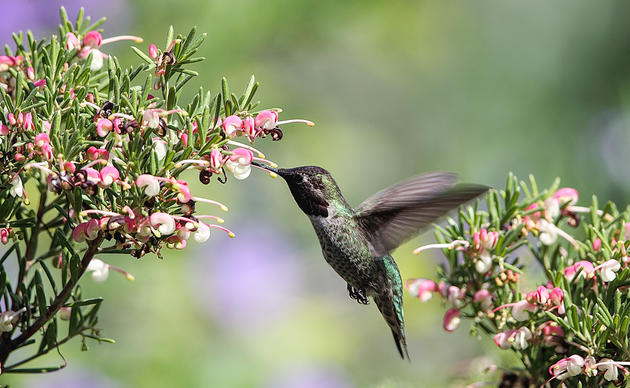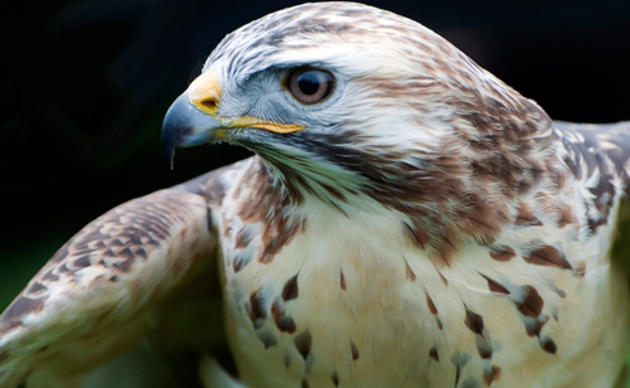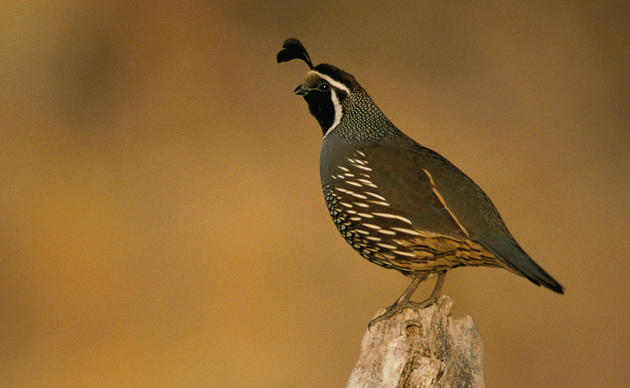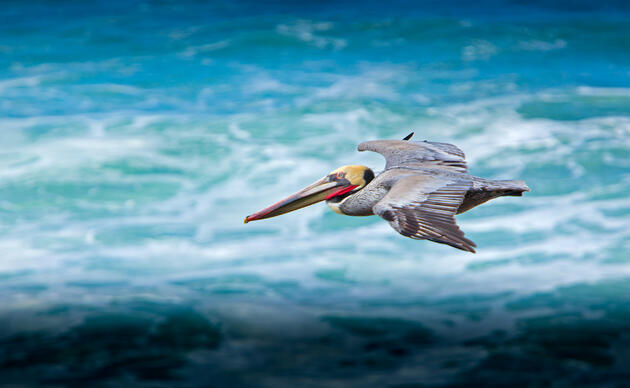In 1991, the George HW Bush Administration banned the use of lead shot for waterfowl hunting after decades of research and debate finally resulting in something close to a consensus that the spent lead was slowly decimating populations of ducks and geese. And right now, that law is the baseline for all 50 states in terms of the use of lead ammunition (and we should point out that this law has been a tremendous success). If one were to believe the opposition to Assembly Bill 711, one might conclude that the idea of regulating the use of lead ammunition for the protection of wildlife is some crazy notion that could only come from California. But the reality is that California is actually one of the more lax states when it comes to the use of lead ammunition.
For instance, you can use lead shot to hunt upland birds in just about all of California's state wildlife areas. But that's something you can't do in such anti-hunting states such as South Dakota, Texas, and some parts of Tennessee. In all, more than 30 other states have laws on the books restricting the use of lead ammunition that go beyond the federal rule. All of these states have recognized at one point in time that lead from spent ammunition poses a danger to wildlife, and degrades the investment that taxpayers have made in protected bird habitat. California currently has a law on the books to protect the California Condor in its range, but other states have singled out Mourning Doves, snipes, rails and miscellaneous upland game, just to name a few. We point this out to highlight the fact that at one time, you could have a reasonable discussion about the hazards of lead ammunition without triggering an ideological shouting match that has nothing to do with the facts.
Below is a list of all the states that have regulated the use of lead ammunition, along with some detail about what specific use is restricted. Most of these are for lead shot, which would come under Assembly Bill 711. The list was compiled by the Institute for Wildlife Studies citing USA TODAY research, the American Bird Conservancy, the Association of Fish and Wildlife Agencies, with additional research from the Humane Society of the United States. One could read this list as a pretty broad consensus that lead from ammunition poses a threat to wildlife.
Alabama: Migratory birds, except doves
Alaska: Snipe; or while using muzzleloading shotguns
California: Eight-county historic range of the California condor
Colorado: Alamosa/Monte Vista/Baca National Wildlife Refuge Complex
Delaware: During Sept, when dove hunting in State Wildlife Areas; when dove hunting in Wildlife Management Areas
Illinois: Dove hunting on some public lands
Iowa: All game in wildlife management areas except deer and turkeys; snipe and/or rail on all state and private lands; grouse, quail and/or pheasant on some state lands
Kansas: Migratory birds except dove and woodcock; 17 state wildlife areas and refuges for upland game birds and other small game
Kentucky: Doves in 13 wildlife management areas and national wildlife refuges
Louisiana: Doves at Pointe-aux-Chenes Wildlife Management Area
Maine: Upland game other than deer and turkey in national wildlife refuges and in wildlife management areas and refuges and for migratory game birds, snipe and/or rail on all state and private lands
Maryland: Rail and snipe
Minnesota: In the Upper Mississippi River National Wildlife Area
Missouri: In 21 conservation areas
Montana: On federal national wildlife refuges and federal waterfowl production areas
Nebraska: Within federal waterfowl production areas, national wildlife refuges and some state wildlife management areas
Nevada: Gallinules and snipe and in wildlife management areas
New Jersey: Rail, snipe, or moorhens on all state and private lands
New Mexico: Common moorhen, sora, Virginia rail, snipe, dove, band-tailed pigeon, upland game or migratory game birds on all State Game Commission owned or managed areas
New York: Snipe, rails or gallinules
North Carolina: Captive-reared mallards on shooting preserves, in field trials and during bona fide dog training activities
North Dakota: Sandhill cranes, tundra swans and snipe statewide; on all U.S. Fish and Wildlife Service lands, including federal refuges, except turkeys and big game
Ohio: In Metzger Marsh, Mallard Club, Pipe Creek, Magee Marsh, Toussaint, and Little Portage wildlife areas
Oklahoma: All species of game on the Sequoyah and Washita National Wildlife Refuge and at Red Slough Wildlife Management Area and Hackberry Flats Wetlands
Oregon: Upland bird (i.e. non-water fowl) on some national wildlife refuges and some wildlife areas
Pennsylvania: Turkey and crow
South Carolina: In some wildlife management areas
South Dakota: On most state land and U.S. military land for small game and for sandhill crane, snipe and tundra swan
Tennessee: In some wildlife management areas and refuges
Texas: All game birds in wildlife management areas and federal wildlife refuges
Utah: Sandhill crane and some wildlife management areas
Virginia: Migratory gamebirds snipe, rail, moorhens, gallinules
Washington: In many wildlife areas, pheasant release sites and recreation areas
Wisconsin: Doves on all Department of Natural Resources-managed lands and national wildlife refuges
Wyoming: Grouse and chukar and gray partridges on all national wildlife refuges and chukar and gray partridges and all small game in the Springer and Table Mountain Wildlife Habitat Management Areas.
* This list is a few months old. While we did some spot checking for accuracy, it's possible that some states may have changed their laws since it was completed. We'd appreciate any corrections to the list.
Photo by the USFWS
By Garrison Frost
Monthly Giving
Our monthly giving program offers the peace of mind that you’re doing your part every day.




